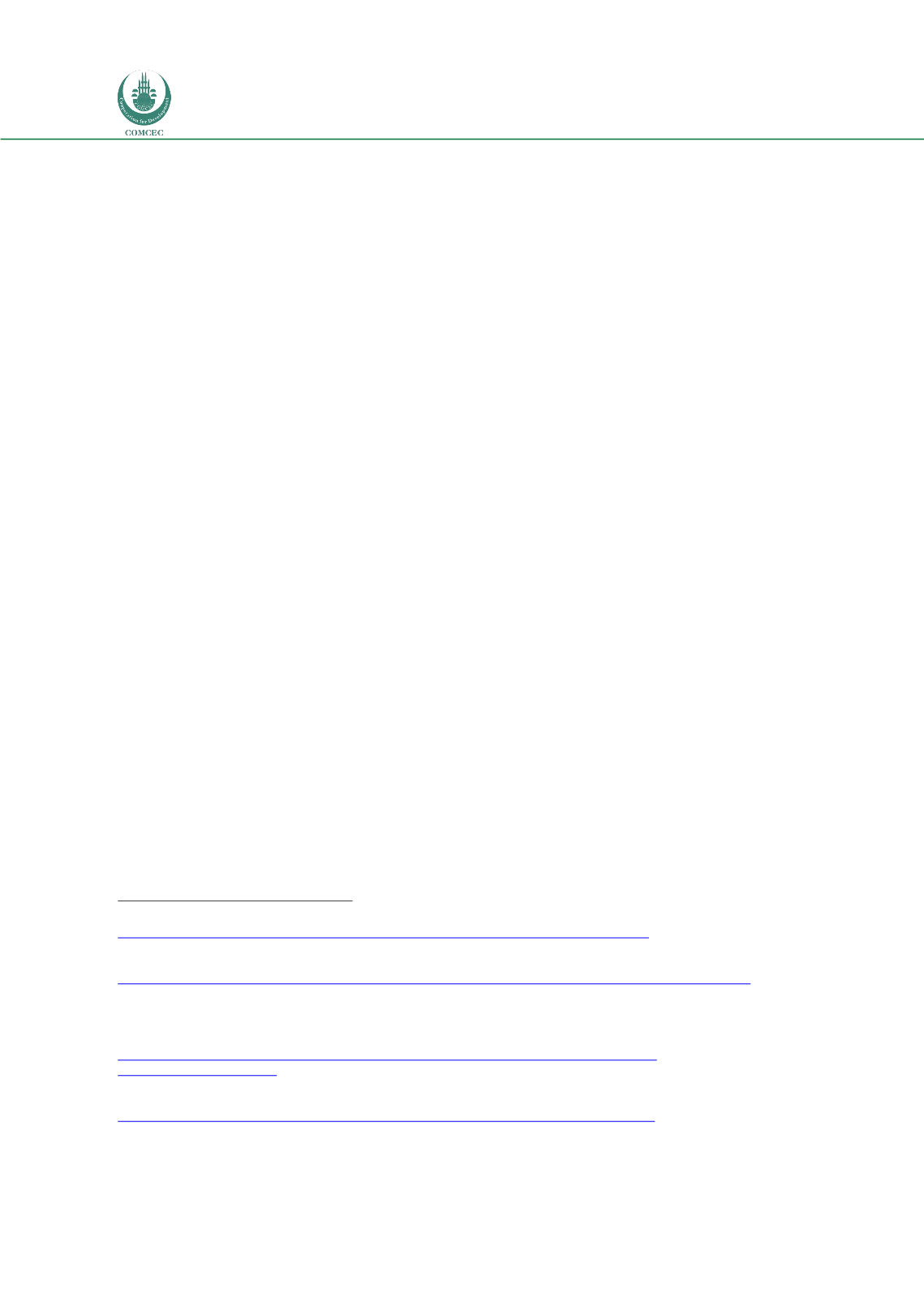

Forced Migration in the OIC Member Countries:
Policy Framework Adopted by Host Countries
58
areas.
239
While the ceasefire and democratic elections in Myanmar have brought hope that
these refugees may be able to return, some of whom have been displaced for over 25 years,
many are reluctant to return home in case fighting breaks out again.
240
Political violence has
also displaced a sizeable number of Sri Lankan refugees, who continue to flee human rights
abuses despite the official end of civil conflict in 2009.
241
Southeast Asia also holds a long history of forced migration along maritime routes, of which
the most prominent example is the Indochinese Boat People Crisis of the 1970s (see Box 2).
Irregular migration routes are common across the Bay of Bengal and the Andaman Sea,
through the Straits of Malacca to reach the archipelagos of Indonesia and Malaysia. Despite
governments’ increasing efforts to control their borders, irregular maritime migration has
continued.
242
One particularly vulnerable group who has recently used these maritime routes
to seek protection and economic opportunity is the Rohingya of Myanmar.
The Rohingya, a Muslim minority group in Myanmar, are not considered citizens and many are
legally banned from leaving impoverished ghettos in Rakhine state, restricting their access to
education, health services, and stable livelihoods for their families or community.
243
Many
Rohingya have thus sought refuge in nearby countries, such as Bangladesh, Indonesia, and
Malaysia. Malaysia in particular is seen as a desirable destination due to its predominantly
Muslim culture and economic opportunities.
244
Despite the fact that Rohingya in Malaysia are
severely exploited, denied healthcare and public education, and don’t hold the right to work in
the formal economy, many seek to join the clandestine community of 75,000 Rohingya in the
country and work informally.
245
For most Rohingya, the first step of the journey is crossing the border to escape Myanmar. To
do so, Rohingya will pay smugglers to reach Bangladesh by boat, especially between
November and April when calmer seas facilitate travel.
246
In the past, some Rohingya travelled
to Thailand, either by sea via Bangladesh or directly from Myanmar. However, the Royal Thai
Government’s campaign against irregular migration in 2015 caused smugglers to avoid
Thailand, resulting in a sharp escalation of migrants in Malaysian and Indonesian waters. In
2015, approximately 33,600 migrants travelled across the Bay of Bengal, mostly Rohingya and
239
Alisa Tang, “After 30 years in Thailand, a glimmer of hope for refugees from Myanmar,”
Reuters
, May 11, 2016,
http://www.reuters.com/article/us-humanitarian-summit-thailand-refugees-idUSKCN0Y20DQ .240
Tang, “After 30 years in Thailand, a glimmer of hope for refugees fromMyanmar”
241
Emily Howie, “Sri Lanka is a refugee-producing country. Here’s why,”
The Guardian
, July 7, 2014,
http://www.theguardian.com/commentisfree/2014/jul/08/sri-lanka-is-a-refugee-producing-country-heres-why .242
Newland,
Irregular Maritime Migration in the Bay of Bengal
, 2
243
Marie McAuliffe,
Resolving the Policy Conundrums: Enhancing Protection in Southeast Asia
, (Washington, DC: Migration
Policy Institute, forthcoming 2016); Joshua Carroll, “Myanmar’s Rohingya deprived of education,”
Al Jazeera
, August 4,
2014,
http://www.aljazeera.com/indepth/features/2014/08/myanmar-rohingya-deprived-education- 201484105134827695.html .244
Newland,
Irregular Maritime Migration in the Bay of Bengal
, 2
245
Chris Buckley, “Even in Safety of Malaysia, Rohingya Migrants Face Bleak Prospects,”
The New York Times
, June 3, 2015,
www.nytimes.com/2015/06/04/world/asia/rohingya-migrants-malaysia.html?ref=world&_r=0 ;McAuliffe,
Resolving the
Policy Conundrums
, 18
246
UNODC,
Migrant Smuggling in Asia: Current Trends and Related Challenges
, (Geneva: UNODC, 2015), 65.
















